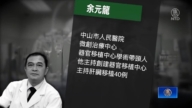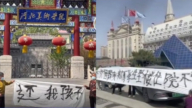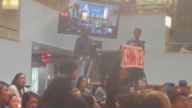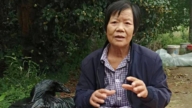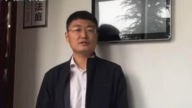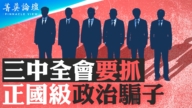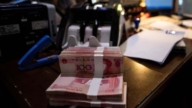【新唐人2012年7月31日訊】近來中國很不太平。北京暴雨,揚州地震,就連一向民風和諧的江蘇南通啟東市也爆發數萬民眾上街,抗議日資造紙廠排污口工程風波,場面火爆。「王子造紙公司」週一發表聲明,否認排污工程將污染當地水源的說法。與此同時,有消息傳來,廠內污水自去年起已經排入長江,而首當其衝受影響的是:四千萬上海市人的食水。消息引發上海等地網民震怒,並呼籲發起類似啟東的抗爭行動。
7月30號,「王子造紙」發表聲明表示,有關污水中含有緻癌物質的說法是「毫無根據的」。聲明說,污水在排出前已經經過淨化處理,絕對符合中國標準。
上週末,數以萬計的江蘇啟東市民爆發大規模示威,並衝進市政府,反對日資廠排污。
28號下午,當局調來2萬名軍警,鎮壓抗議民眾。有人權組織指稱,事件已造成3人死亡,多人受傷,超過100人被捕。
面對官民激烈衝突,南通市政府當天決定永久取消「南通排海工程」。但有關工廠今後產生的污水將如何排放,當地政府與「王子造紙」並沒有做出說明。而據《日本共同社》報導,「王子造紙」29號已經復工。
不少民眾對此表示質疑和擔憂。
大批網民在微博轉載日本《朝日新聞》的報導說,造紙廠早於去年(2011年)1月投產時,已將污水排入長江,並且說污染或許已遍及長三角地區。
有網民製作地圖顯示,位於南通經濟開發區的「王子造紙」,排放的污水若經長江流向下游,首當其衝的將是為上海市內四千萬人口提供食水的「青草沙水庫」。
「達爾問自然大學水學院」負責人邵文傑認為,現在急需弄清楚,「王子造紙」排污口的水質有沒有達到規定的標準。
「達爾問自然大學水學院」負責人邵文傑:「假如說它排污管道的排污口的水質是達標的,它對長江的影響也是非常非常大的。因為從長江整個的情況來看,下游的水質越來越差,污染企業又特別多,影響特別重,要不然它為甚麼要把那個管道伸入海洋裡面去?」
消息引發長江下游上海等地網民哄動,除有民眾狠批政府賣國、「治標不治本」等等,更有網友呼籲沿江民眾發起類似啟東的抗爭行動,網友說:「我們要取消這個項目,不是讓你換個地方排!」
中國政治和社會觀察家戴晴指出,中國經濟所謂的快速發展,主要以兩個方面為代價。
中國政治和社會觀察家戴晴:「一個是完全沒有權利的平民,第二個是完全沒有權利的環境和資源。所以看起來有表面的繁榮在發展,可實際上傷害的是平民百姓和資源和環境。那麼現在我覺得特別好的,就是像四川的甚邡和很多地方,普通的百姓,他們已經起來,自己起來知道保護自己的土地了。終於中國人民覺醒了,有了『自己是有權利的』意識。這個比甚麼都好。」
戴晴說,普通百姓的土地和生活條件完全被毀壞之後,他們就會變成無家可歸,他們就處於絕境。
上海市民:「作為中國老百姓,我感到非常的不慶幸。即使它不排放,我們喝的水也不乾淨。我吃的菜不乾淨,我吃的米飯還有激素。這個是我們執政黨的問題,體制的問題,體制不破,永遠得不到有效解決。」
日本「王子造紙公司」自2007年起開始在中國建設工廠,工廠每天排放的污水量將達到15萬噸。
因此,有網友說,現在「王子造紙」只建完第一期項目,還有第二期和第三期,等到全部建成之後,勢必將有巨量的污水直接排入長江,上海人民就等著喝工業廢水吧。
採訪/朱智善 編輯/王子琦 後製/朱娣
Water Pollution in Qidong Threatens Shanghai
China has not been peaceful recently, with rainstorms
in Beijing, the earthquake in Yangzhou,
and Qidong’s protest against a polluting paper mill,
which has involved tens of thousands of citizens.
On July 30, the Oji Paper Company denied suggestions
that local water pollution was caused by its plant in Qidong.
A news report, circulated on the internet, alleged
that the plant’s drain water has been discharged into the Yangtze River since 2011.
Drinking water for 40 million Shanghai
residents’ would be firstly affected.
The news has greatly shocked netizens
in Shanghai and nearby areas.
They appealed to follow Qidong’s mass protest.
On July 30, Oji Paper publicly stated that
the talk is “groundless” about carcinogenic sewage.
The discharged sewage has been purified and absolutely
meets Chinese standards, the announcement claimed.
Last weekend, tens of thousands of Qidong citizens
took to the street to protest the polluting industrial project.
They occupied the government office building.
On July 28, over 20,000 police entered Qidong.
The suppression has killed three people and wounded
many, a human rights organization alleged.
Over 100 protesters were reportedly arrested.
Under strong pressure, Nantong CCP authorities announced
it would permanently suspend the polluting project.
But no explanation was given by the authorities
and Oji Paper on how to discharge sewage.
On July 29, the production of the Oji Paper plant in Qidong
was resumed, according to Japan’s Kyodo News reports.
It has aroused wide public doubts and concerns.
A news report in Japan’s Asahi Shimbun
has been widely reproduced in micro-blogs.
It said that back in January 2011, the paper mill’s
sewage was discharged into the Yangtze River.
The news reported that contamination might
have spread all over the Yangtze River Delta region.
A map drawn by a netizen shows that the Oji Paper factory
is located in Nantong Economic Development Zone.
If the discharged sewage flows downstream
in the Yangtze River, a reservoir would be effected first.
This reservoir provides drinking water
for 40 million Shanghai residents.
Shao Wenjie, Director for Water Education learning
Society noted that
the most urgent thing now is to find out whether the
factory’s drainage water reaches required quality criteria.
Shao Wenjie: “If the drain water doesn’t meet quality
standards, it would have great impact on the Yangtze River.
Its downstream water quality is now getting worse.
A particularly large number of polluting
factories have been set up in the area.
If it isn’t polluting, why didn’t it lay
its sewage pipeline into the ocean?”
The news has aroused great concern among
netizens in the lower area of the Yangtze river.
Some posts criticized the CCP regime’s irresponsibility.
Some called on residents to protest like Qidong citizens.
“We need to cancel this project rather than allow
it to change the area into a sewage discharge!"
Dai Qing, a China observer, comments that the rapid growth
of China came at a cost of two major factors.
Dai Qing: “The first is the populace is stripped of civil rights.
The second is the devastating use of environmental
resources. China’s prosperity is on the surface.
It is based on the sacrifice of civilians,
resources and the environment.
Now I feel particularly good, as lots of ordinary people
in many places like Shifang in Sichuang have stood up.
They acted to protect their environment.
The Chinese people are awakening at last.
They’ve come to understand that 『we have our own rights’,
which is the best awareness.”
Dai Qing said that ruining the land and living conditions
make ordinary people homeless and hopeless.
Shanghai citizen: “I feel very unlucky to be Chinese.
Even without being affected by sewage, we’re still drinking
unclean water and eating polluted vegetables.
Even the rice I eat contains hormones.
That was caused by the ruling party; the political system.
Without disintegration of this system,
the problem will never be resolved.”
Japan’s Oji Paper Company started
construction of its plant in China in 2007.
The plant’s sewage discharge will
reportedly reach 150,000 tonnes daily.
A netizen posted on the internet that Oji Paper
has just finished the first phase of it’s projects.
Phase II and Phase III have been on the agenda.
When fully operational, the factory will pour huge
amounts of sewage into the Yangtze River.
Then the Shanghai residents will have no other
choice but to drink industrial wastewater.




